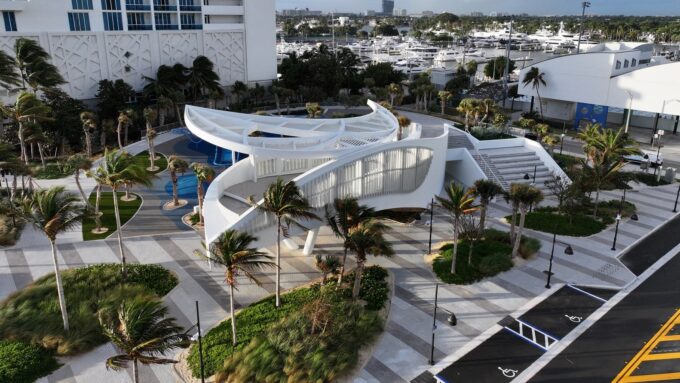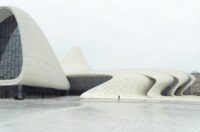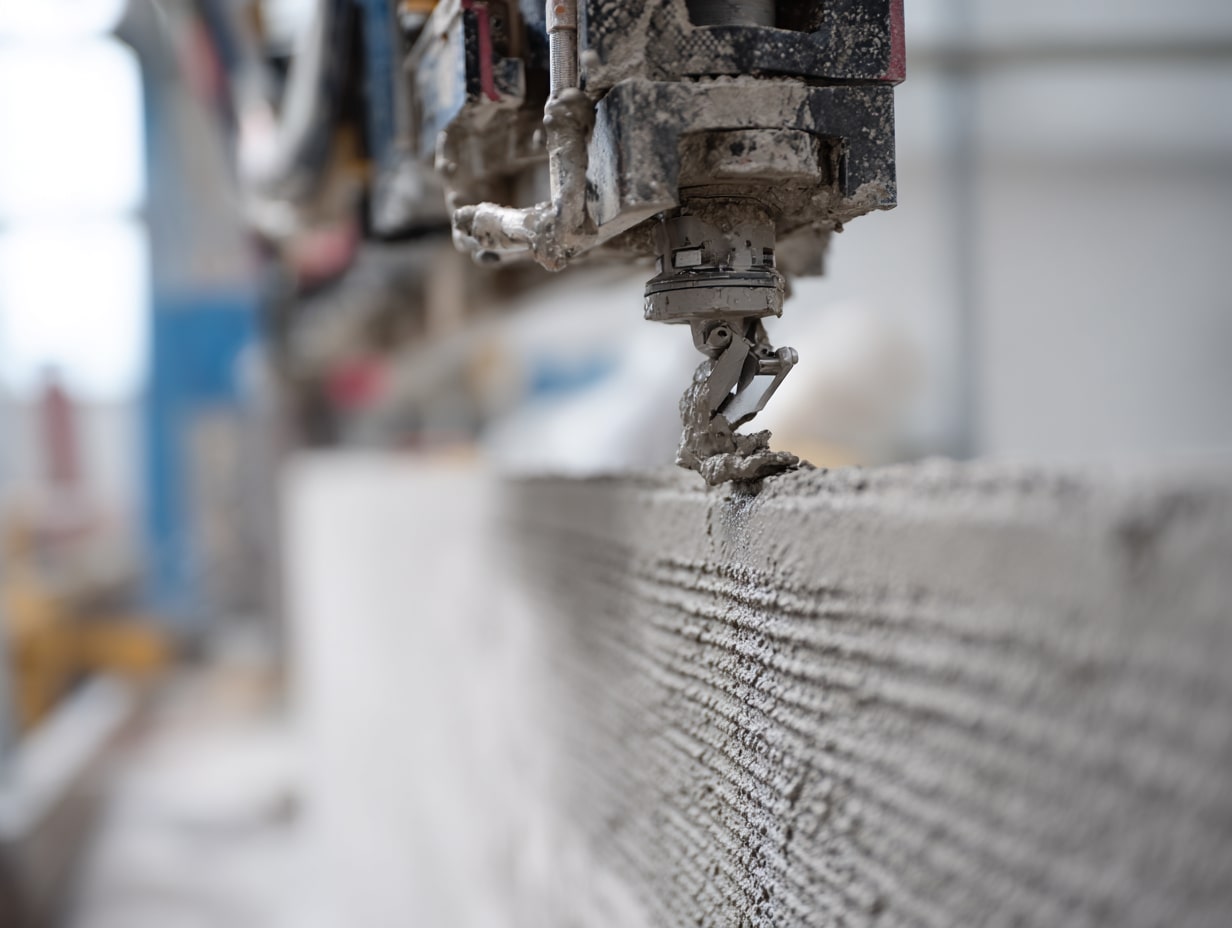- Home
- Articles
- Architectural Portfolio
- Architectral Presentation
- Inspirational Stories
- Architecture News
- Visualization
- BIM Industry
- Facade Design
- Parametric Design
- Career
- Landscape Architecture
- Construction
- Artificial Intelligence
- Sketching
- Design Softwares
- Diagrams
- Writing
- Architectural Tips
- Sustainability
- Courses
- Concept
- Technology
- History & Heritage
- Future of Architecture
- Guides & How-To
- Art & Culture
- Projects
- Interior Design
- Competitions
- Jobs
- Store
- Tools
- More
- Home
- Articles
- Architectural Portfolio
- Architectral Presentation
- Inspirational Stories
- Architecture News
- Visualization
- BIM Industry
- Facade Design
- Parametric Design
- Career
- Landscape Architecture
- Construction
- Artificial Intelligence
- Sketching
- Design Softwares
- Diagrams
- Writing
- Architectural Tips
- Sustainability
- Courses
- Concept
- Technology
- History & Heritage
- Future of Architecture
- Guides & How-To
- Art & Culture
- Projects
- Interior Design
- Competitions
- Jobs
- Store
- Tools
- More
Designing Fitness Spaces: How Architecture Shapes the Modern Gym Experience

Walk into any gym today, and you’ll notice it feels more like a curated experience than just a place filled with equipment. That’s no accident. The architecture of modern fitness spaces goes far beyond aesthetics—it directly influences how people move, feel, and perform. From layout to lighting, each design choice carries psychological and functional weight.
Table of Contents
ToggleWhat is gym architecture?
Gym architecture refers to the specialized planning, design, and construction of fitness facilities that optimize user experience, safety, functionality, and aesthetics. It integrates principles from architecture, interior design, engineering, and exercise science to create spaces that support physical activity, member satisfaction, and operational efficiency.
Why does architecture matter in gym design?
The architecture of a gym does much more than house used gym equipment and other fitness tools. It serves as a silent motivator, influencing how users engage with the space from the moment they step inside.
An intelligently designed gym controls user flow, minimizing confusion and maximizing convenience. Clear pathways between zones help members navigate intuitively, reducing hesitation and improving time spent on workouts. This flow also reduces bottlenecks, ensuring members can transition between activities smoothly.
Architecture also contributes to safety. Thoughtful spacing, strategic placement of emergency exits, and clear visibility help prevent accidents. Members feel secure knowing that risks like collisions, falls, or overcrowding have been minimized by design.

From a psychological perspective, design can enhance motivation. High ceilings, open layouts, and purposeful lighting can make a facility feel energizing, while intimate spaces for stretching or recovery foster relaxation. A well-designed gym can subconsciously push members to stay longer and work harder, enhancing both performance and satisfaction.
How does space planning influence gym functionality?
Effective space planning is the backbone of any successful gym. Every square foot must serve a purpose while supporting diverse user needs.
A well-organized gym ensures:
- Smooth traffic flow that prevents congestion
- Clear zoning for cardio, weights, group classes, personal training, and recovery
- Full accessibility meeting ADA compliance standards
- Strategically positioned emergency exits and robust safety plans
- Proper lighting placement for visibility and ambience
By carefully mapping each area, architects ensure members can access equipment easily, avoid hazards, and enjoy a more productive workout environment.
What are the main gym zones and their purposes?
Each gym zone serves a specific role in creating a complete fitness experience:
- Entrance & reception: Sets the first impression, offering check-in services and member assistance.
- Locker rooms: Provide secure storage, personal hygiene, and comfort facilities.
- Cardio area: Houses treadmills, bikes, and ellipticals for endurance training.
- Strength training/free weights: Dedicated for resistance training with machines, benches, and free weights.
- Group fitness studios: Host instructor-led classes like yoga, cycling, or HIIT.
- Functional training areas: Feature open spaces with tools like kettlebells, medicine balls, and resistance bands.
- Stretching and recovery zones: Offer quiet spaces for post-workout flexibility and relaxation routines.
- Outdoor training spaces (if applicable): Expand workout options with fresh air, turf, or running tracks.
- Wellness & spa areas: Include saunas, massage rooms, and holistic wellness services.
How does lighting design impact gym atmosphere?
Lighting plays a profound role in shaping both mood and safety within fitness environments. The right lighting can stimulate energy, reduce eye strain, and define spatial boundaries.

Different lighting strategies serve specific purposes:
- Motivational energy: Bright, vibrant lighting enhances alertness and drive.
- Safety: Adequate illumination prevents accidents and improves spatial awareness.
- Visual comfort: Soft, glare-free lighting reduces eye fatigue.
- Highlighting key equipment zones: Focused lighting draws attention to specific workout areas.
- Daylight integration vs. artificial light: Balances natural and supplemental lighting for optimal ambiance.
What are the best lighting technologies for gyms?
Choosing the right lighting technology affects both aesthetics and operational costs. Many facilities now turn to Industrial LED lighting services for tailored solutions that maximize both performance and efficiency. Compared to fluorescent options, LEDs offer superior color rendering, longer lifespan, and customizable brightness.
Natural lighting integration, through skylights or large windows, can boost mood and energy levels while lowering energy consumption. However, designers must carefully manage glare and heat gain to ensure comfort. Energy-efficient systems with smart controls allow facilities to fine-tune lighting levels based on occupancy and activity type.
What role does acoustics play in gym design?
Sound management is often underestimated but deeply affects user comfort and satisfaction. Without proper acoustic planning, gyms can become overwhelming, causing distractions or even driving members away.
Effective acoustic strategies include:
- Soundproofing materials that absorb echoes and minimize reverberation
- Ceiling designs that help diffuse sound across large open spaces
- Strategic equipment placement to reduce noise near quieter areas
- Tailored approaches for classrooms (music-driven) vs. weight rooms (impact-driven)
- Direct impact on member satisfaction by creating a more focused, pleasant environment
How do ventilation and air quality affect gym experience?
Ventilation is critical in maintaining a healthy workout space where members feel comfortable breathing during exertion. Poor air quality can deter repeat visits.
Key factors include:
- Proper air exchange rates to ensure continuous fresh airflow
- HVAC design that balances temperature and air circulation
- Humidity control to prevent condensation and discomfort
- Odor management to eliminate sweat and equipment smells
- Infection control standards reflecting post-COVID best practices
- Fresh air integration for improved oxygen levels
How does flooring selection influence safety and performance?
The floor beneath members’ feet directly affects comfort, injury risk, and noise levels. Every gym zone demands tailored flooring choices.
Important flooring considerations include:
- Material types: rubber, foam, turf, hardwood, vinyl
- Shock absorption to protect joints and minimize impact injuries
- Slip resistance for safety during dynamic movements
- Ease of maintenance to simplify cleaning
- Sound dampening to control acoustic levels
- Durability to withstand heavy equipment and foot traffic
How do color schemes impact member behavior and mood?
Colors influence emotions and behavior, helping set the gym’s atmosphere for different types of workouts.
Common color strategies:
- Energizing colors: reds, oranges, and yellows stimulate motivation
- Calming colors: blues and greens promote relaxation in recovery zones
- Neutral balancing tones: grays, whites, and beiges create modern aesthetics
- Branding considerations: customized palettes align with the gym’s identity
How important is natural light in modern gyms?
Natural light offers multiple health and operational benefits, contributing to both well-being and sustainability.

Key advantages include:
- Supporting circadian rhythm for better sleep and energy regulation
- Reducing electricity costs through daylighting strategies
- Enhancing mental well-being and mood during workouts
- Increasing member retention through an uplifting environment
- Addressing design challenges such as glare control and heat gain
How does equipment layout maximize member satisfaction?
Equipment arrangement impacts both functionality and user comfort. Poor layout can create bottlenecks and safety risks.
Effective layout strategies:
- Clear visibility across workout zones
- Logical progression of exercise areas from warm-up to cool-down
- Adequate spacing for safety between machines
- Separate zones for group and individual training
- Strategic use of mirrors and sightlines to aid form and motivation
What are the recommended spacing guidelines for gym equipment?
Precise measurements help avoid overcrowding while maintaining efficiency:
- Treadmills: approximately 18–24 inches apart
- Weight machines: 24–36 inches of clearance
- Free weight areas: at least 48 inches of open space
- Walkways: minimum width of 36 inches
What sustainability elements can be incorporated into gym architecture?
Sustainability now plays a major role in gym design, appealing to eco-conscious members and lowering operational costs.
Sustainable design features:
- Energy-efficient LED lighting systems
- Recycled and renewable flooring materials
- Low-VOC paints and adhesives for indoor air quality
- High-efficiency HVAC and ventilation systems
- Water-saving fixtures in locker rooms
- Solar panel integration where feasible
- LEED certification for comprehensive green building standards
How does technology integration reshape modern fitness spaces?
Technology enhances both member experience and operational management in modern gyms.
Key integrations include:
- Smart lighting and HVAC systems for energy optimization
- Integrated audio-visual systems for dynamic classes
- Digital check-ins and access control
- Equipment connected to fitness apps for data tracking
- Virtual and hybrid training studios to expand member options
What are the benefits of incorporating virtual fitness technology?
Virtual fitness offers flexibility for members and additional revenue streams for gyms:
- Hybrid class offerings for both in-person and remote participants
- Remote coaching options to expand trainer services
- Broader membership appeal with on-demand content
What trends are shaping gym architecture today?
Several design trends are redefining fitness facilities:
- Boutique fitness studios with specialized experiences
- Outdoor fitness zones for year-round fresh-air workouts
- Recovery lounges focused on holistic wellness
- Biophilic design using nature-inspired elements
- Multi-use community spaces encouraging social interaction
- Post-pandemic spatial adjustments for safety and distancing
How should safety be addressed in gym architecture?
Safety remains a non-negotiable design priority, requiring layered planning:
- Clearly marked emergency exits and evacuation routes
- Slip-resistant flooring throughout all zones
- Securely anchored equipment to prevent tipping
- Comprehensive fire suppression systems
- Secure storage for personal belongings
- Video surveillance for security monitoring
- Design features that proactively prevent injuries
What are common design mistakes to avoid?
Avoiding key errors prevents future operational headaches:
- Overcrowding gym equipment into limited space
- Failing to provide adequate ventilation
- Poorly positioned lighting that causes glare or shadows
- Ignoring acoustics and allowing excessive noise buildup
- Undersizing locker rooms and support spaces
- Neglecting recovery areas critical to member wellness
- Overlooking universal accessibility requirements
What factors influence total gym design cost?

Multiple factors drive final project pricing:
- Total size and square footage
- Custom features, materials, and finishes
- Location-specific building codes and regulations
- Investment in gym equipment inventory
- Complexity of HVAC, ventilation, and mechanical systems
What professionals are involved in gym architectural projects?
A full project team typically includes:
- Architects
- Interior designers
- Structural engineers
- MEP (Mechanical, Electrical, Plumbing) specialists
- Acousticians
- Lighting designers
- Fitness consultants
- General contractors
Conclusion
Designing a gym is far more than arranging machines in a room. It’s a careful orchestration of architecture, psychology, and technology. The best gyms feel natural, motivating, and safe—because every detail has been shaped with intention. As fitness continues to evolve, so too will the spaces we train in, blending science, creativity, and innovation into tomorrow’s ultimate workout experience.
Submit your architectural projects
Follow these steps for submission your project. Submission FormLatest Posts
3D Printed Homes: Time, Cost, and What to Expect
3D printed homes explained: realistic timelines (24–72h walls, 8–16 weeks total), true...
How a Contact Centre Boosts Trust in Your Building Business
In construction, trust is the glue that holds projects together. Clients need...
How Real Time Parcel Geolocation Is Redefining Last Mile Efficiency for Modern Businesses
Last mile delivery has become the most critical point in the customer...
How Can Small Spaces Stay Stylish and Relaxing?
In today’s fast-paced urban lifestyle, small living spaces are becoming increasingly common....












Leave a comment